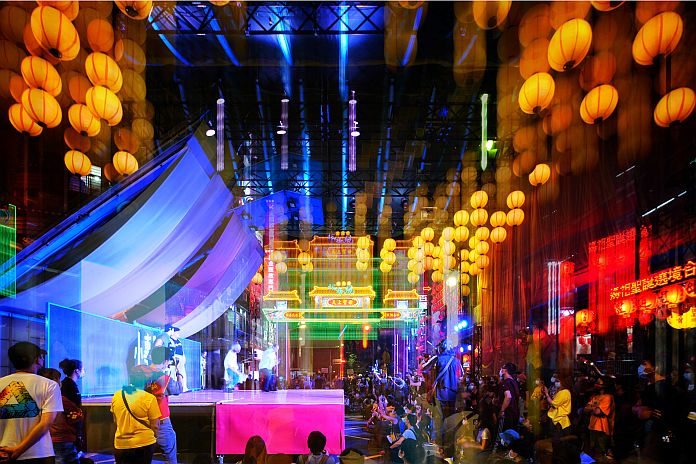TAIPEI, Taiwan – Until a new wave of COVID-19 infections were first reported in Taiwan earlier this year, many joined the annual pilgrimage to Mazu, held by Cihui Mazu Temple and co-organized by Netizen Productions, in New Taipei City, continuing a local religious tradition dating back more than 100 years. A fusion of traditional aesthetics and contemporary art has become an element of the scenery of many Taiwanese cities and towns in the post-epidemic era.
On May 4, a pilgrimage parade integrating contemporary art and historical heritage ignited the enthusiasm of the people of New Taipei City, Taiwan’s most populous municipality. Different from Taiwan’s traditional electronic floats, a work of art in the form of a Vehicular installation art (Shinyu) shuttled back and forth between the city’s older lanes and newer neighborhoods, echoing the words of the prayer that has given and continues to give the people of Taiwan a sense of hope in their daily lives.

As one of the final events of the evening, the Vehicular installation art (Shinyu) disappeared underneath the art installation entitled Shengque in front of the temple. Upon reappearing, the Vehicular installation art (Shinyu) had been transformed into a stage installation, seamlessly becoming a part of Taipei’s nightly Cyberpunk scene. The use of contemporary art forms to formally announce the beginning of the ceremony celebrating the goddess Mazu’s birthday is a perfect example of the fusion of the old and the new. The performance groups on the stage incorporated street, Oriental and temple music to reinterpret the ancient culture.

Mazu is the most revered deity in Taiwan. On the 23rd day of the third lunar month when the deity’s birthday is traditionally observed, most everyone joins the various temple celebrations. The center of the celebration is at the Ci-Hui Temple in New Taipei City’s Banqiao district. The Lin Ben Yuan family, the richest family in Taiwan during the late Qing Dynasty, donated the funds to renovate the temple, and for generations, it became the spiritual destination for generations of residents. The Lin Family Mansion, the region’s focal point, has developed into a city within city connecting the area’s three main commercial and shopping districts.
As the prelude to the seriesFuzhong Shuang cheng: Gucheng Kailu series of events, event organizer, Netizen Productions, will highlight local design and link the ancient city to the new urban environment through a series of contemporary art projects, showcasing the unique life aesthetics of the area.

This year’s pilgrimage took place safely thanks to strict epidemic prevention measures adopted by Taiwan officials, including temperature taking and hand disinfection at entrances, use of face masks and a registration system requirement genuine contact information in case contact tracing is needed, as well as strict control of the pedestrian traffic flow. However, given the recent round of COVID-19 infections in Taiwan, Taiwanese authorities have announced a full cessation of all pilgrimage activities. For the foreseeable future, the event organizers are looking at all possibilities for presenting the works of art online.







